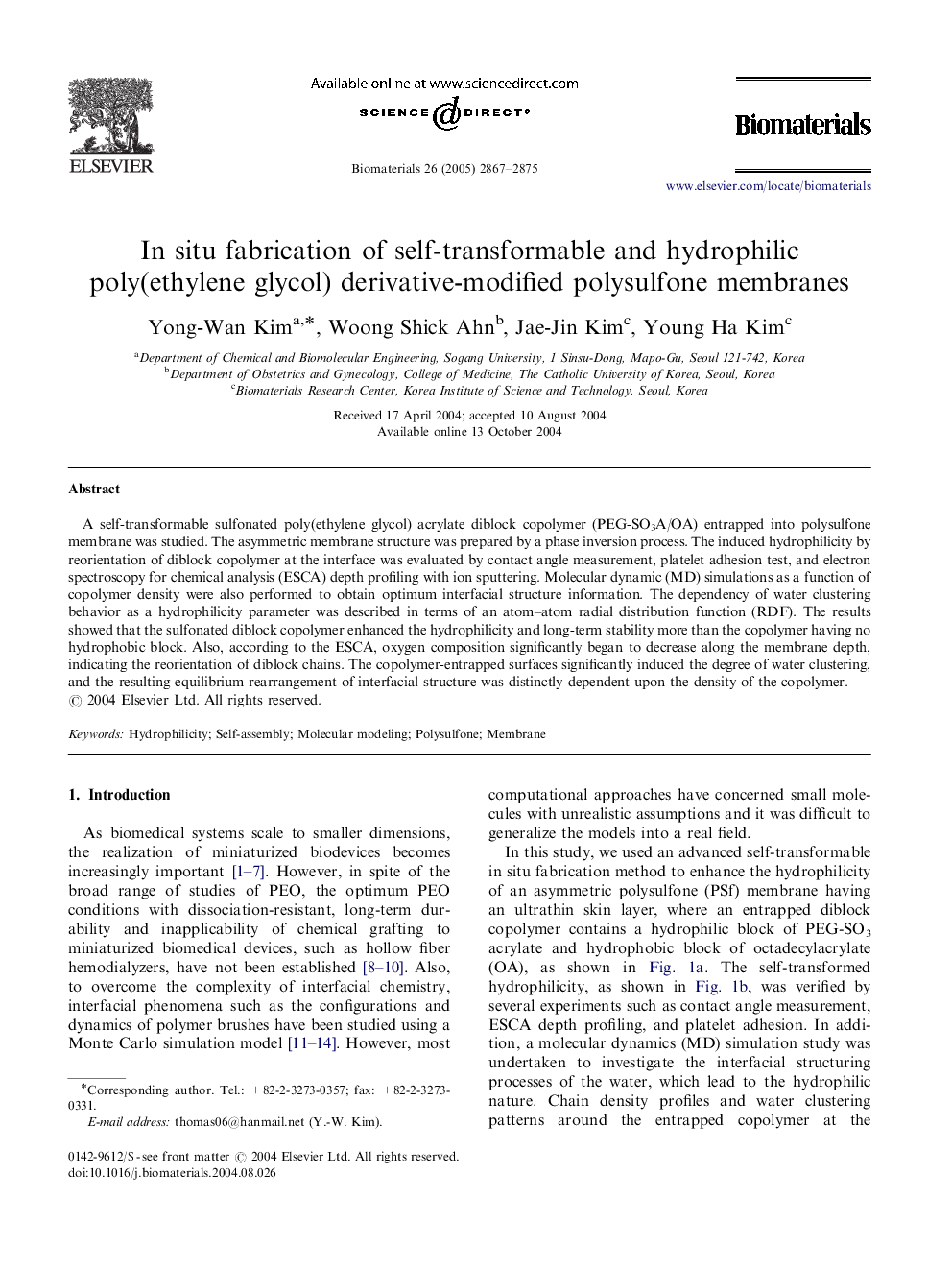| Article ID | Journal | Published Year | Pages | File Type |
|---|---|---|---|---|
| 12236 | Biomaterials | 2005 | 9 Pages |
A self-transformable sulfonated poly(ethylene glycol) acrylate diblock copolymer (PEG-SO3A/OA) entrapped into polysulfone membrane was studied. The asymmetric membrane structure was prepared by a phase inversion process. The induced hydrophilicity by reorientation of diblock copolymer at the interface was evaluated by contact angle measurement, platelet adhesion test, and electron spectroscopy for chemical analysis (ESCA) depth profiling with ion sputtering. Molecular dynamic (MD) simulations as a function of copolymer density were also performed to obtain optimum interfacial structure information. The dependency of water clustering behavior as a hydrophilicity parameter was described in terms of an atom–atom radial distribution function (RDF). The results showed that the sulfonated diblock copolymer enhanced the hydrophilicity and long-term stability more than the copolymer having no hydrophobic block. Also, according to the ESCA, oxygen composition significantly began to decrease along the membrane depth, indicating the reorientation of diblock chains. The copolymer-entrapped surfaces significantly induced the degree of water clustering, and the resulting equilibrium rearrangement of interfacial structure was distinctly dependent upon the density of the copolymer.
